Introduction to the basic knowledge of Lanshan Coffee beans the characteristics of grade flavor and taste of authentic Lanshan No.1 coffee
Professional coffee knowledge exchange More coffee bean information Please pay attention to coffee workshop (Weixin Official Accounts cafe_style)
More fine coffee beans, please add private WeChat Qianjie Coffee, WeChat: qjcoffeex
Blue Mountain coffee beans loved by so many generations of coffee people? One was that there wasn't much good quality coffee in the past, but beans from the Blue Mountains of Jamaica were the best quality coffee on the market. One reason is that there weren't many coffee choices at that time, so Blue Mountain Coffee's reputation could be said to be "sideways" for many years. Another reason is that Blue Mountain coffee balance mellow flavor, for people to bring a sense of stability, never tired of drinking.
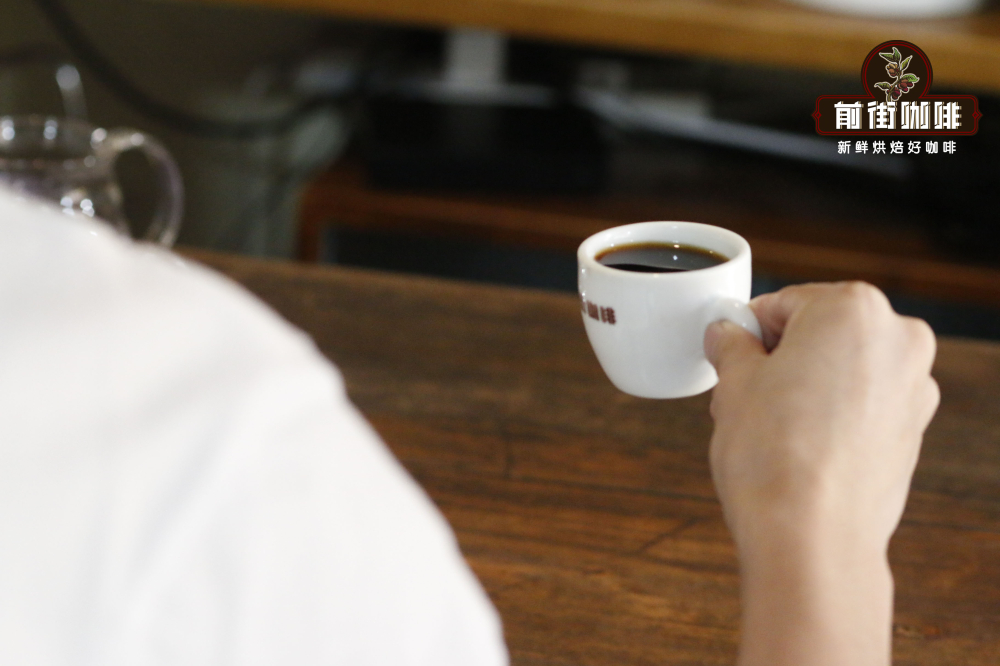
Why is Blue Mountain Coffee Good?
Blue Mountain coffee is delicious, inseparable from the terroir altitude on the Blue Mountain Range, and the island climate of Jamaica, which provides a very favorable growth environment for coffee trees growing here. At the same time, the variety of coffee itself is also the main reason for the good flavor of Blue Mountain coffee.
Blue Mountain Coffee
The Blue Mountains are located in the eastern part of Jamaica Island, with its highest peak at 2256 meters above sea level. However, coffee can only be grown below 1700m, which is an ecological protection forest stipulated by the Jamaica government. The only coffee that can be named Blue Mountain Coffee is coffee grown at an altitude of 900-1700m.
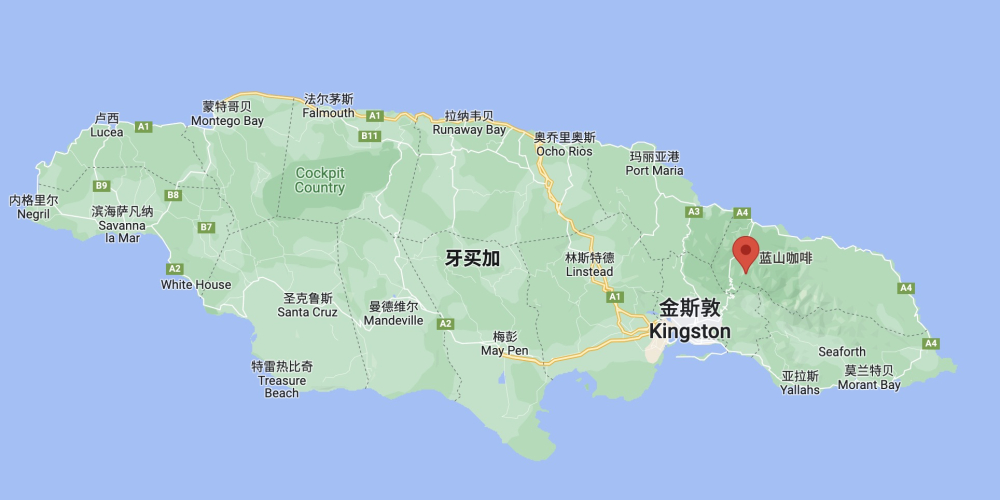
Because the Blue Mountains are located here in the coffee belt, and other Central and South American neighboring countries have very active areas, the Blue Mountains are fertile volcanic soils. Coupled with fresh air, no pollution, humid climate, foggy and rainy all year round, average precipitation of 1980 mm, temperature of about 27 degrees, such climate created the world-famous Jamaica Blue Mountain Coffee.
Blue Mountain Coffee Varieties
The history of Jamaica coffee dates back to the 18th century, when King Louis XV of France ordered coffee cultivation in Jamaica in 1717. In the mid-1920s, Sir Nicholas Lawes, Governor General of Jamaica, imported Arabica seeds from Martinique and began to promote cultivation in St. Andrew.
After genetic identification, this coffee variety is the oldest iron pickup variety in the Arabica family, and is the "ancestor" of many coffee varieties today, including the bourbon variety, which is also a long-standing variety, and is also a natural variant of iron pickup.
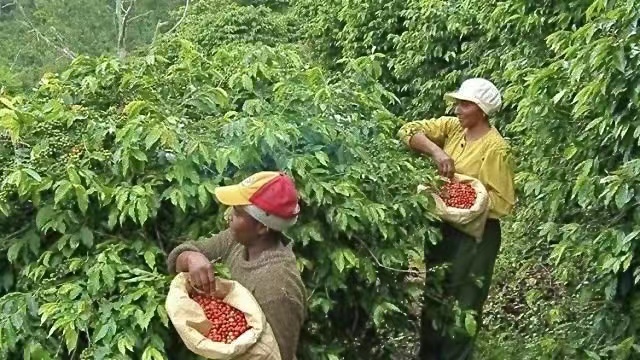
After more than 200 years, Blue Mountain Iron Pickup has evolved better disease resistance, especially better resistance to fruit rot than ordinary iron pickups, while retaining the characteristics of clean and quiet flavor of the improved varieties. Therefore, the flavor of Blue Mountain Coffee is very balanced, and the sweet and sour are evenly presented to each other, which makes people very fascinated.
One particular thing is that these tin-coated cards are grown below 900m above sea level, or outside the Blue Mountains, and do not have the same fascinating coffee flavor performance.
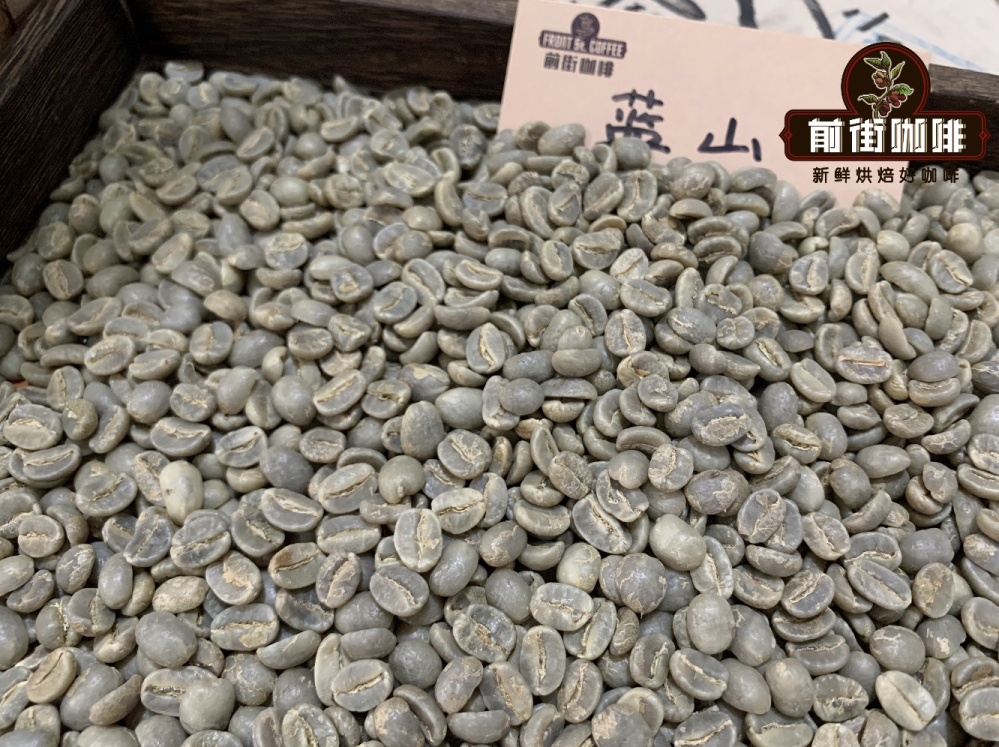
Where can I buy Blue Mountain Coffee?
Front Street Coffee is arguably the number one fan of Blue Mountain Coffee! In order to make sure you can buy authentic and cost-effective Blue Mountain coffee beans, a Blue Mountain No.1 coffee bean from Clifton Manor, Jamaica's oldest coffee growing area, is on sale on the front street.
As the so-called rare is expensive, Blue Mountain Coffee has a very large reputation, so there are a lot of counterfeit goods on the market, so in order to identify the authenticity of Blue Mountain Coffee for consumers, the Jamaica government stipulates that all exported Blue Mountain Coffee beans need to be loaded in barrels, and the Jamaica Coffee Bureau can issue certificates for all exported Blue Mountain Coffee.
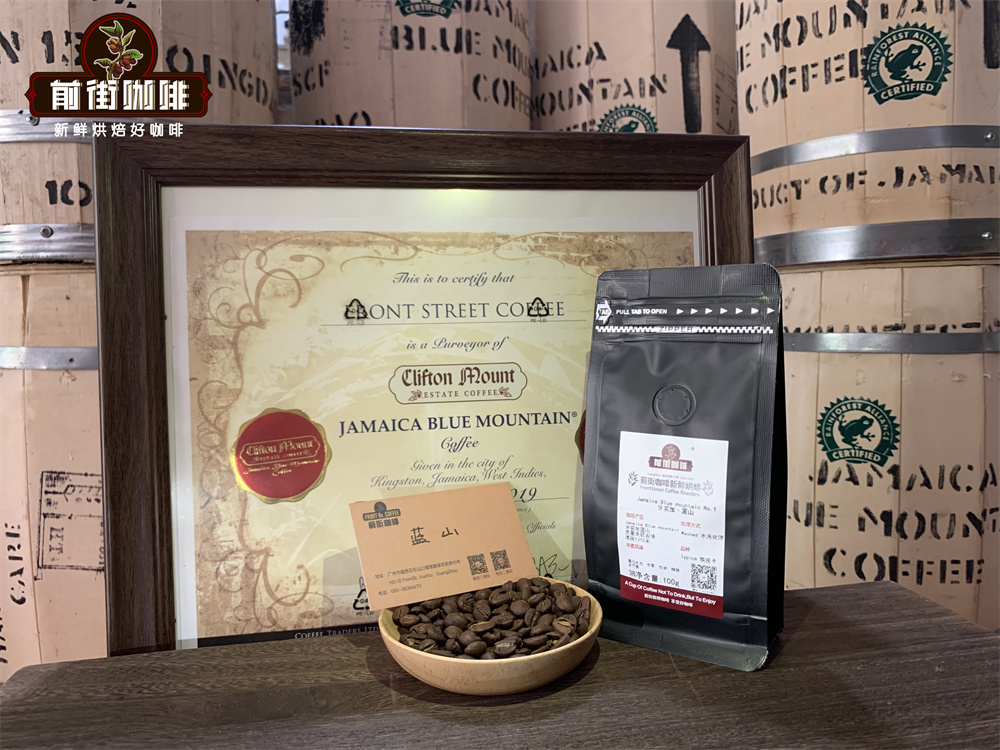
Front Street Coffee's offline stores can see certificates issued by Clifton Manor and Blue Mountain coffee barrels with the Green Water Frog (Rainforest Alliance certification) logo. At the same time, in order to let consumers drink the best flavor of coffee, all coffee beans sold by Front Street Coffee are released within 5 days after roasting.
How does Blue Mountain Coffee taste?
To achieve Blue Mountain No.1 coffee beans, 96% of the coffee fruit size must reach 17 mesh or more, and the defective rate of the coffee beans after processing does not exceed 2%, which also shows that the size of the coffee beans themselves is very uniform, which brings great advantages to coffee roasting.
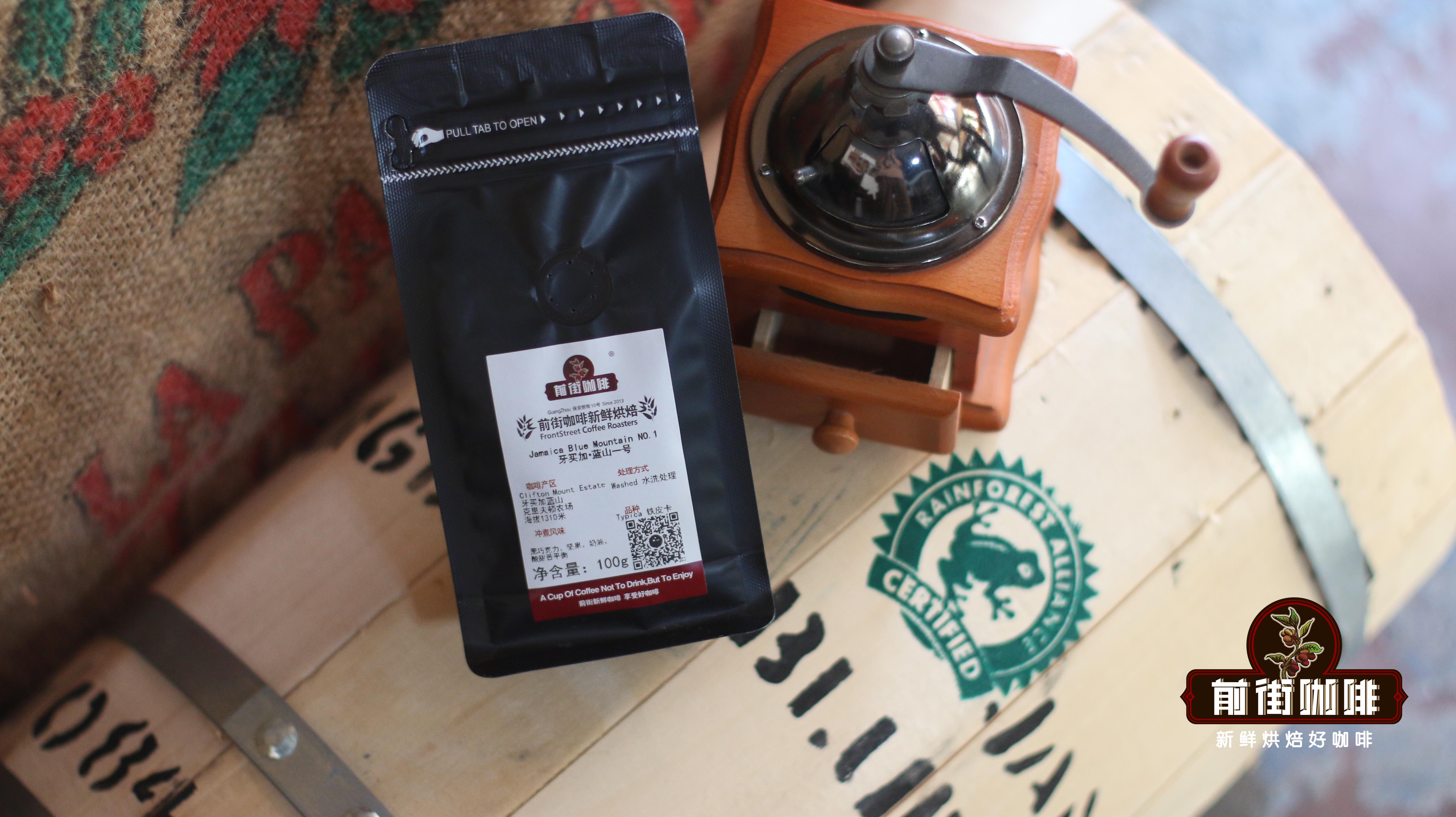
Coffee beans are heated evenly during roasting, which is the key to a clean balance of coffee flavor. Longer caramelization can bring more mellow substances to coffee. In order to preserve the balance of sweet, sour and bitter taste of Blue Mountain No.1 coffee and its mellow and solid taste, Front Street Coffee adopts a medium and deep roasting degree.
To show the mellow and balanced characteristics of Blue Mountain No. 1 coffee, Front Street Coffee recommends the use of lower water temperatures for extraction, while matching the Kono filter cup with a slower flow rate to ensure that coffee substances are extracted as much as possible under low water temperature conditions.
Brewing parameters of Qianjie coffee are suggested: Kono filter cup (the filter cup is characterized by using the close fit characteristics of filter paper and filter cup to perform immersion extraction during the process of hand brewing coffee, so that the coffee concentration is higher), 88C water temperature, 1:15 powder water ratio, 15g powder weight, grinding degree: white sugar size (No. 20 standard sieve pass rate 70%).
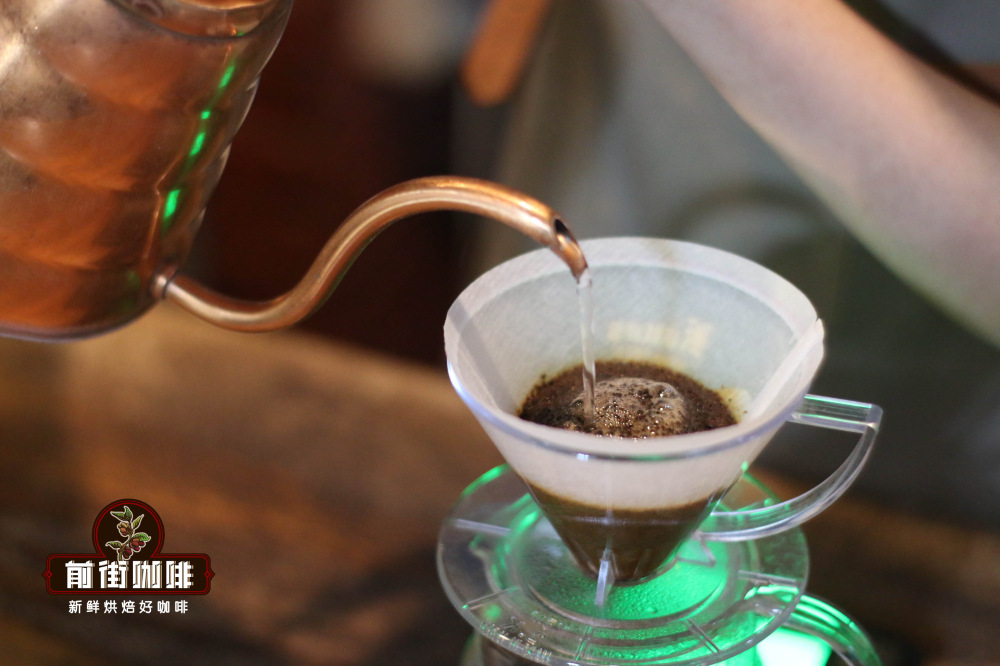
The method of water injection is as follows: firstly, 30g hot water is injected and stewed for 30 seconds, then fine water flow is injected from the center point and slowly circled to 125g, and when the water level in the filter cup drops to about to expose the powder bed, the water is continuously circled to 225g, and the total extraction time is about 2 minutes. Finally, shake the extracted coffee and start tasting it.
Blue Mountain No.1 coffee beans brewed in Qianjie can smell caramel aroma at the steamed stage. When drinking, you can taste rich nuts and dark chocolate flavor. The overall taste is full and the aftertaste is sweet and clear.
Important Notice :
前街咖啡 FrontStreet Coffee has moved to new addredd:
FrontStreet Coffee Address: 315,Donghua East Road,GuangZhou
Tel:020 38364473
- Prev
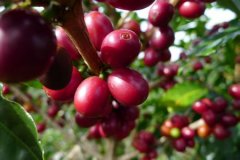
Coffee common sense the secret of why Blue Mountain Coffee tastes pure
Their coffee trees are on rugged hillsides, and the picking process is so difficult that non-local skilled female workers are simply unable to do it. It is very important to choose the right ripe coffee beans when picking. Immaturity or ripeness will affect the quality of the coffee. The picked coffee beans are shelled on the same day, and then let them ferment for 1218 hours. After that, the coffee beans are washed and screened.
- Next
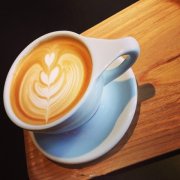
Blue Mountain Coffee-Blue Mountain Coffee-Blue Mountain Coffee
Blue Mountain Coffee comes from Jamaica and is world-famous as the most superior coffee in the world. Blue Mountain coffee tastes mellow, acid, sweet, bitter moderate, exudes an attractive elegant atmosphere Jamaica island area is small, the Blue Mountain Mountains located in the northeast of Kingston, because the mountains in the Caribbean Sea surrounded by, whenever the weather is clear days,
Related
- Beginners will see the "Coffee pull flower" guide!
- What is the difference between ice blog purified milk and ordinary milk coffee?
- Why is the Philippines the largest producer of crops in Liberia?
- For coffee extraction, should the fine powder be retained?
- How does extracted espresso fill pressed powder? How much strength does it take to press the powder?
- How to make jasmine cold extract coffee? Is the jasmine + latte good?
- Will this little toy really make the coffee taste better? How does Lily Drip affect coffee extraction?
- Will the action of slapping the filter cup also affect coffee extraction?
- What's the difference between powder-to-water ratio and powder-to-liquid ratio?
- What is the Ethiopian local species? What does it have to do with Heirloom native species?

